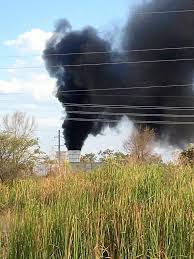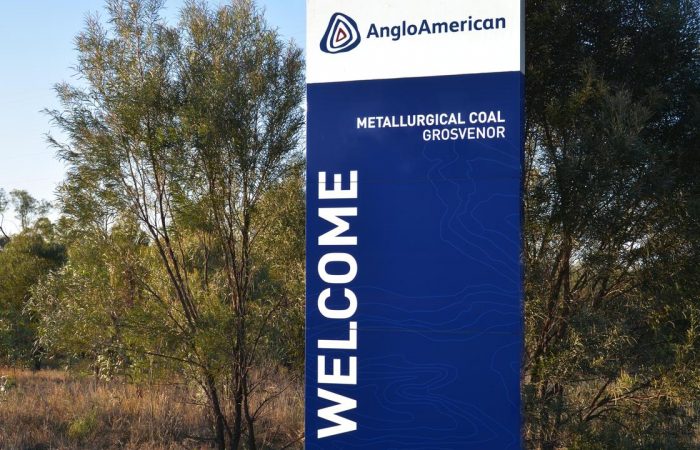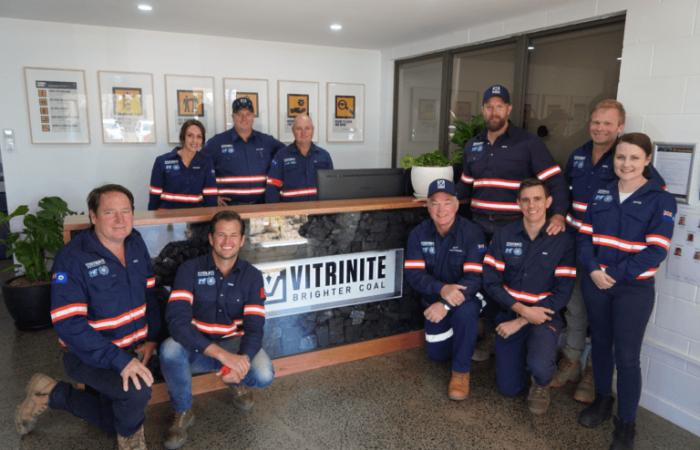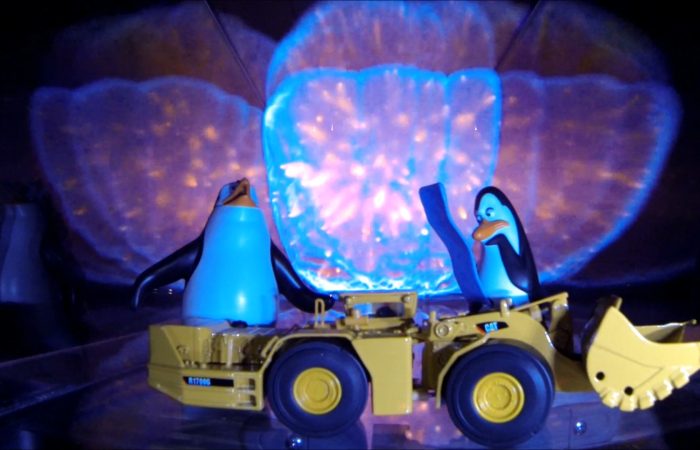
The reason why the Queensland Mining Industry can’t learn is there are No Public Investigation Reports, No Recommendations and No Learnings. Any wonder history repeats
There are only 3 more working days till the 3 year Anniversary of Black Smoke coming from the Main Fan as out of control spontaneous combustion caused underground explosions and the sealing of the North Goonyella Mine.
- Why have the Mines Inspectorate not published or communicated ANY Findings from North Goonyella Fire in September 2018?
- Would Grosvenor Explosion have Happened if the Mines Inspectors had released findings and ensured Mines Review their Safety and Health Management Systems?
- Is it Willful Negligence by the Mines Inspectorate (RSHQ) that has contributed to Spontaneous Combustion igniting methane grievously burning 5 Miners at Grosvenor?
Spontaneous Combustion causing methane explosions is unfortunately well known in Queensland particularly in thick seam mines.
Box Flat, Kianga, Moura No 2 spring readily to mind.
Each underwent extensive Public Inquiries and their Findings and Recommendations were communicated including changes to Mining Legislation including the Principles, Structure and content of the Current Act and Regulations.
It is a direct insult to
- Workers forever entombed in Kianga, Box Flat, Moura No 2, their families, friends, work mates and the Queensland Mining Community.
- North Goonyella Workers subject to the circumstances of the North Goonyella Mine fire, and the resulting closure of the Mine who have lost their employment
- All underground coal mine workers in the State particularly the Grosvenor Workers.
North Goonyella has caught fire from spontaneous combustion in September 2018, remote sealing from the surface, all mining equipment and most of the mine permanently sealed, the mine has closed and everyone has lost their job.
The Mines Inspectorate has supposedly been conducting its own Investigation for the last 3 years, yet has not released one Recommendation for Industry
Meanwhile Grosvenor in May 2020 has a spontaneous combustion initiated methane explosion in 2020 gravely burning 5 Miners.
Then within a month later an out of control spontaneous combustion, remote sealing of the longwall block from the surface, followed by further explosions underground. No-one reentered the mine for nearly 12 months.
There are eerie similar findings published by Peabody and what came up from the Grosvenor Inquiry.
Nearly any One of the Nine Findings and Proposed Actions from Peabody individually; and certainly in combination would have prevented the events at Grosvenor in May 2020.
North Goonyella and Grosvenor Mine (and Moranbah North) are about 20km from each other as the crow flies and All Longwall Mine the Goonyella Middle Seam.
The only details the public knows about the events at North Goonyella is what Peabody self disclosed in 2019 and from Superannuation Fund Initiated Court Action documents filed from New York USA where Peabody is accused of misleading the Stock Market over North Goonyella.
The Mines Inspectorate has put out two one pagers in 3 years saying its under Investigation and cannot comment because they may be enforcement action.
“Enforcement Action” has at least 5 different levels with Public Prosecution being level 5 and last option
https://www.rshq.qld.gov.au/__data/assets/pdf_file/0005/1453361/north-goonyella-high-potential-incident.pdf
Will it ever go to Court in Queensland?
Current Inspectors and the now Ex- Mines Inspectors, Management who still actively work in the Industry, as well as “Industry Experts” including SIMTARS would have to give public evidence.
No refusing to participate and hiding as Anglo Management like the Grosvenor Inquiry.
No cherry picking which Inspectors give evidence.
Those Inspectors actively involved with North Goonyella would have to put their hands on the bible.
I am not going to go through the Peabody Findings point by point.
Read the findings yourself and come to your own conclusions
Throughout the incident Peabody’s incident management team worked alongside the QMI and industry experts to ensure it utilized the best people and resources. Peabody continues to cooperate fully with the QMI as it undertakes its own independent investigation into the incident.
“I want to thank Peabody employees, the union, customers, neighboring mines, the community of Moranbah, the Inspectorate and countless others who have helped out during this challenging time,” said Schuller. “We will be contacting other coal companies and industry bodies to further share learnings in coming months to strengthen the body of knowledge around underground mine ventilation and fire prevention.”
A. Peabody will review ventilation controls and design used during the longwall “take-off” process to minimize the amount of air that enters the longwall panel goaf and interacts with exposed coal remaining within the goaf. Ventilation controls that were put into place in advance of the longwall take-off process may have permitted higher-than-expected volumes of ventilation air to enter the goaf during the longwall take-off process, resulting in oxidation. Gas management and ventilation changes were made in and around the 9 North panel tailgate area in response to elevated levels of methane, which inadvertently intensified the oxidation.
B. Evaluate decision-making processes to address the challenges of remotely managing an underground incident solely from the surface, which can lead to unclear or ambiguous results. For instance, as the incident approached late September and treatment of the oxidation event escalated, including injection of nitrogen from the mine surface into the 9 North panel goaf, fluctuating gas readings led North Goonyella mine personnel and expert third-parties to believe that the treatment plan was likely working due to a purging of gases from the goaf.
C Peabody also believes that the system used to monitor and analyze available mine gas data can be improved and better coordinated to identify early stages of oxidation events. Additional training to the appropriate mine personnel will be implemented to recognize fire gas indicators, gas management and spontaneous combustion, and provide an understanding of a mine’s ventilation history, with focus on identifying ventilation trends and key indicators of oxidation and developing heating for longwall mines.
D. Peabody will modify the longwall removal planning process to reduce the number of days to complete the longwall take-off process to allow for earlier commencement of final sealing, incorporating additional contingency planning in the event the target cannot be achieved. The amount of time the North Goonyella mine’s 9 North panel was idle increased the propensity for oxidation to occur in the longwall panel goaf. Peabody will consider additional contingency measures, including installation of pre-drilled holes at the appropriate locations immediately behind the longwall chock line to allow oxygen inhibitors to be injected when longwall advance stops to mitigate against oxidation.
E. Peabody will improve the Sealing Management Plan to provide greater clarity around the required steps for sealing the longwall panel (particularly in relation to how these steps interact and relate to the longwall move and re-installation plan). The improved plan will provide for the allocation of resources to ensure the Sealing Management Plan is followed as described. Peabody will also provide additional training for underground personnel prior to sealing operations commencing.
F. Peabody will hone its system for the management of Trigger Actions Response Plans (TARPs) to provide clearly defined trigger points, clear explanations of actions to be taken if trigger levels are reached, and improved methods, training and communications involving changing TARPs.
Application and progression of TARPs during the longwall take-off process varied from that set out in the Sealing Management Plan, and communication of TARPs was found to be inconsistent. TARPs describe actions that must be taken by mine personnel in response to observation of certain conditions or triggers (e.g. gas levels) that deviate from normal. TARPs should clearly define their applicability and the required action items when trigger points are reached.
G. Peabody will review the Principal Hazard Management Plan (PHMP) for Spontaneous Combustion and Emergency Response around the provision of clear and concise guidance in relation to gas readings. The company will also implement a regime for reviewing the PHMP at established intervals and updating as required.
H. Within the Site Incident Management Team (SIMT), Peabody will appoint an independent facilitator whose role will be to assist the SIMT in the decision-making process (rather than the technical aspects of SIMT decisions). The SIMT was comprised primarily of North Goonyella mine management personnel, though various other parties also provided input into the SIMT’s decision making process. At times, it was challenging for the SIMT to coordinate and address differing viewpoints from multiple stakeholders. Although these outside parties each play critical roles in responding to a mine emergency, the varied viewpoints need to be effectively managed and facilitated during an incident.
I. Peabody is taking action to install quickly closable remote ventilation control devices at each mine drift as we progress through the reventilation process. In addition, Peabody will evaluate options to remotely isolate portions of the longwall panel to provide an option to quickly close these devices after all personnel have been evacuated from the panel. Peabody’s ability to quickly seal the panel to extinguish the oxidation event before it developed into a fire was impaired once the mine was evacuated and exclusion zones were put in place. Once an oxidation event develops into a spontaneous combustion event, it is difficult to extinguish from the mine surface. The smaller the area of the mine that is sealed from the source of combustion, the less oxygen is available to support it and the quicker it begins to cool, which should facilitate expeditious recovery. These types of devices could be closed by personnel as part of an evacuation sequence, or through remote means. Emergency seals, which can be installed at chute and gate roads at longwall panels, will also be considered as part of an emergency sealing process.


